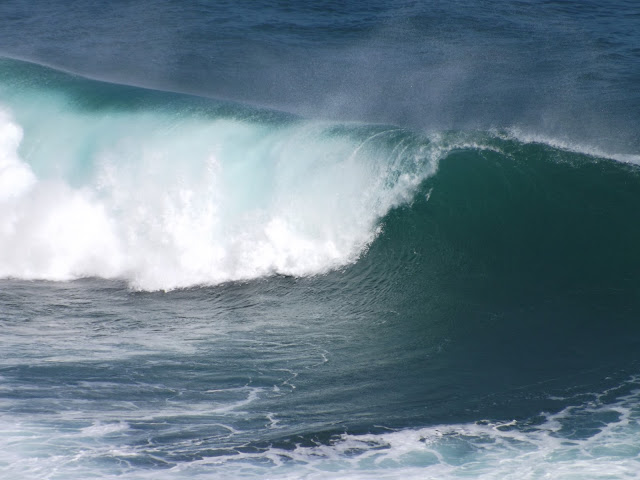So
what else has happened in April to leave me out of breath but full of
gratitude? Bird listening with night
vision glasses. WHAT?
Conscious
people living on Kauai are aware of the
Newell’s shearwater – a lovely little bird that cannot adapt to the human
invention of electricity. They breed in
the mountains and should fledge during the full moon – their eons old instinct
tells them to fly to the moon and in doing that, they are transported out over
the ocean during the night. Instead,
they head for any light source they see – especially light posts – and circle
it until they fall out of the sky. They
haven’t had time to unlearn this dangerous habit.
Our
electric company, which is the source of much controversy due to the highest
rates in the US
for electricity, does have a program called Save our Shearwaters that at least
advertises the risk of sky facing lights.
Both night time ball games and car racing have been curtailed due to the
situation – much to the chagrin of players, parents, and all sports and racing
enthusiasts.
Obviously
the birds are endangered with a population decrease of 75% from 1993-2008. One of the solutions has been to literally
move the eggs to a more convenient fledging location, like the Kilauea Point
Wildlife Refuge. This has worked for a few
birds. The second method has been to
play the sounds of the Newell’s during the night to attract others to breed in
the safe environment that is already home to the Wedge-tailed shearwater.
So,
on the evening of April 19th, having listened to the jackass-like
braying calls of the Newell’s from a computer, I sat in the dark in a known
nesting sight – waiting to hear them. It
was a superb night without rain and I was in a relatively wind-free
location. I was supplied with a pair of
night vision goggles and a seat with a back so I could comfortably sit on the
ground. The requirement was that I be
quiet and fairly still. I loved it. According to the web cam, a Newell did show
up and enter his/her nest and spend the night a few yards from me – without a
peep (or bray).
What was incredible was how many stars show up in the
military type night vision goggles. The
stars visible with the naked eye become huge bright orbs while in between – in
the darkness – are a zillion more light points.
The plants are lit from within, they seem to glow.
Vision quest
I went back a couple days later and took this daylight shot from my vigil seat – not the same . . .
My other adventure with the refuge folks was to go along
with ten third grade students from a charter school that have been studying
Albatross all year.
We met them at the overlook
and they did a long Hawaiian chant for permission to enter. Chicken skin.
The kids chanted as we overlooked the point - asking permission to enter
Red Footed Bobby on nest below the lookout
Seems the chant was acceptable
Using the spotter to see Alabatross Hill, Caroline Tucker presiding
For some of the kids these were the first sightings even though they have studied them all year
This
was their field trip to see the birds first hand. They also got to experience the Wedge tailed
Shearwaters that are here nest building – normally at sea all day (like the
Newell’s and like the Bonin petrels we met on Midway in December).
From lecture to reality, this shearwater was digging further into the burrow
Class and teacher, Malia, watch
Three more wedgies in the roots of a nau paka
Out
on the point, the tropic birds were doing their squawky mating calls
and
showing off for everyone.
Red-tail Tropic birds
The
second part of their field trip (and mine) was Crater Hill, only available with
Refuge personnel. The kids were great –
we met many Red-foot boobies up there who are also in the nest building
process.
Male boobies bring nesting material to the females for placement
These birds are three years old before they have the full colors exhibited here
The kids from Kanuikapono charter school in Anahola, really enjoyed this outing
Snack outside of refuge on Crater Hill
There
were a few whale spouts out among the whitecaps on the very windy sea but the
kids were focused on the birds and chasing each other around with tufts of
weeds they had picked. After all they
are in third grade.


















































